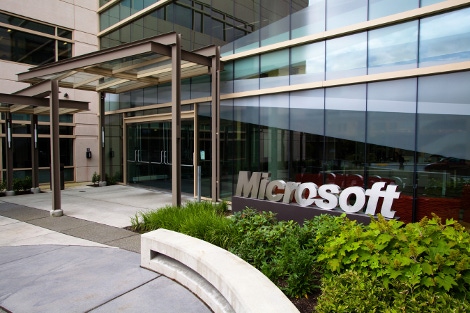Ditching Windows Server 2003 is Necessary if Not EasyDitching Windows Server 2003 is Necessary if Not Easy
Insight warns of key things to consider for migration of the 23.8 million instances of the old server operating system.
September 12, 2014

Windows Server 2003 is quickly reaching the end of its life and a mass migration is set to occur in the world's data centers. Microsoft estimates there are about 23.8 million instances of Windows Server 2003 running today across 11.9 million physical servers worldwide, counting for about 39 percent of the entire Windows install base. That's a lot of migration that needs to happen between now and July 14, 2015, when Microsoft will stop providing support for the old OS.
This migration won’t be easy. The tech world has changed drastically since 2003 and there is a lot of discussion taking place about how to make the leap.
Moving to Windows Server 2012 R2 is an opportunity for Microsoft, its customers and its worldwide partners. Customers will gain more efficiency, while partners stand to make money helping companies make the switch and providing support support. There is also potential opportunity for Microsoft’s Azure cloud, as the end of support can serve as a logical point in time for making the switch from in-house data centers to the cloud.
“It’s an opportunity to move to a more modern OS or to move to an IaaS scenario, such as Azure,” said David Mayer, director of services at Insight Enterprises. “We’re seeing with organizations that we talk with that this is very much an inflection point with the architecture and design of their data center. Do we upgrade internally? Virtualize everything? It’s a multi-pronged conversation.”
Mayer is in charge of the Microsoft consulting services business at Insight, a $5 billion company that has been named the largest SPLA (Service Provider License Agreement) Reseller by Microsoft. Mayer worked at Microsoft for nine and a half years before joining the consulting giant.
“Windows Server 2003 was really stable,” he said. “But as we move to the cloud world, there are a lot of scenarios that weren’t prevalent back then. The big one is that Windows Server 2012 is cloud-ready. The ability to do private, public and hybrid scenarios is huge.”
Not upgrading isn’t really an option. As support ends these servers present a potential security risk. “It doesn’t matter if the server itself has important data, but that 2003 server creates a potential point of intrusion,” Mayer said. “Once you allow somebody in, it becomes much easier for them.”
Consider hardware and software
Two main variables come into play. “In a lot of cases, the hardware [the OS] running on will not support the operating system,” said Mayer. “The other big impact is what applications that server is running. You might need to upgrade the application itself as well if it doesn’t have the cross-compatibility.”
There are systems management considerations as well. While 2003 was a robust operating system, 2012 sees a lot of advancement with systems management.
Mayer also added that users should keep in mind that SQL server 2005, still very much in use, will reach the end of support in 2016. “There’s a kind of continuum as Microsoft upgrades its operations stack,” he said.
Perhaps the biggest consideration, however, is with hardware. While 2012 has many more capabilities, it also often means a need for more powerful hardware.
The hardware benefits include advanced virtualization and reducing overhead to handle more workloads on fewer servers. Recent HP statistics for its ProLiant Gen8 machines (the company recently released Gen9 ProLiants) say that applications run six times faster, deploying servers and updates is three times faster. They provide 70 percent more compute capacity and two times more data center capacity.
Mayer said that on average, customers will need to upgrade about 25 percent net new servers. “It means more hardware, but potentially large return for organizations willing to make that move,” he said.
Three-step process
There are three phases to the migration, according to Mayer.
Phase 1: Holistic discovery and analysis.
“This is extremely important,” he said. “Understand the interaction of the servers in the data center environment. Moving one thing can impact something else. We tell organizations it’s extremely important to map out what is interacting with what and what users are interacting with the applications as well.” Some of the documentation over the past 11 years might not be up to snuff, and this will be tricky.
Some organizations have thousands of 2003 servers and don’t necessarily know which data center each server is in. Healthcare and the public sector are two examples of verticals that have a lot of application dependency because of niche and custom applications. These might break if the migration isn’t carefully done.
Phase 2: Migration.
The main consideration apart from making sure software is compatible is making sure the hardware is compatible as well. Have the right hardware in place, Mayer warned.
Phase 3: Valuation realization and support.
It’s important to do some analysis post migration to learn the benefits. While most have Microsoft Assurance (maintenance), there is a large services opportunity for the channel in selling more Assurance, according to Mayer.
About the Author
You May Also Like







